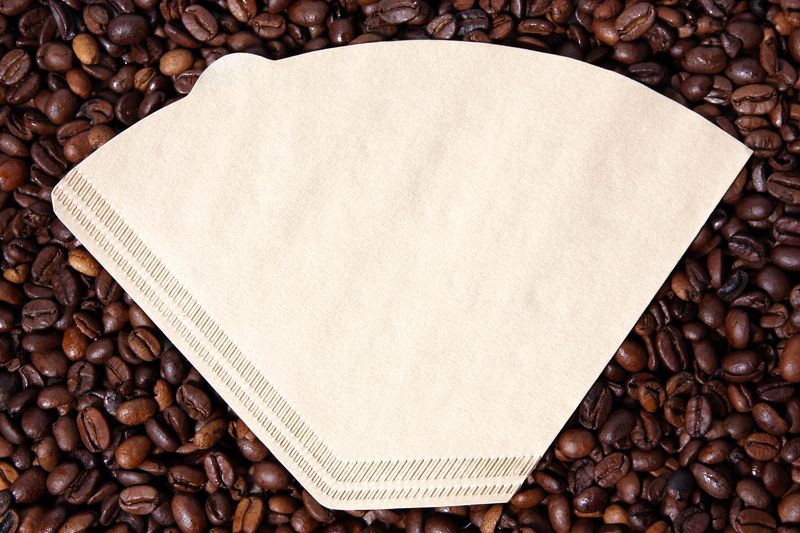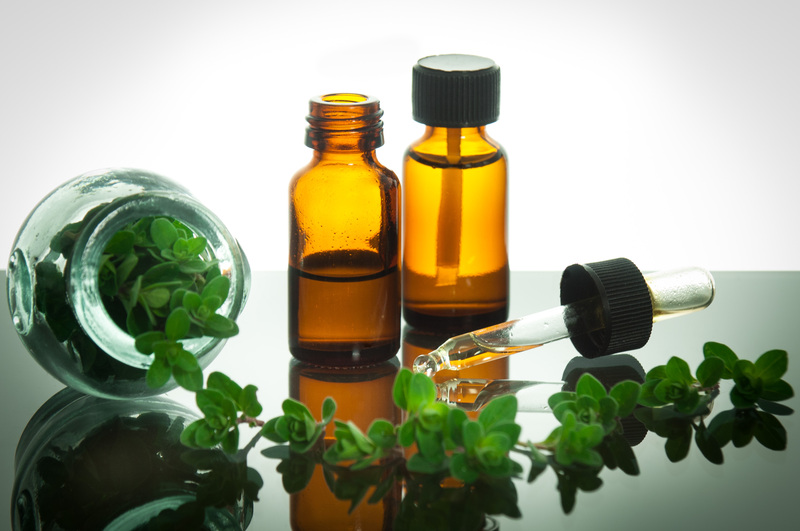Burnt Stovetop Solutions for a Spotless Kitchen
Posted on 12/09/2025
Burnt Stovetop Solutions for a Spotless Kitchen
A spotless kitchen is every home cook's dream, but burnt food spills and stains on your stovetop can quickly become an ongoing nightmare. Whether you've accidentally let a pot overflow, scorched some sauce, or even set off the smoke alarm, burnt stovetop messes don't have to be permanent. With the right techniques and some elbow grease, you can restore your cooktop to sparkling condition and keep it looking brand-new. In this ultimate guide, we'll cover various solutions for burnt stovetops, from gentle daily habits to heavy-duty cleaning methods, so you're armed with everything you need to maintain a spotless and efficient kitchen.
Understanding Why Burnt Stovetops Are a Common Problem
Before we jump into the best ways to clean burnt stovetops, it's crucial to know why these messes happen and why they're often difficult to clean:
- High Temperatures: Cooking at high heat can quickly burn food, oil, or sauces onto your stove surface.
- Material Types: Some stovetop materials, especially glass or ceramic, can show stains more readily than others.
- Delayed Cleaning: Allowing spills to cool and harden makes the mess much harder to remove.
- Improper Cleaning Agents: Using the wrong cleaner can etch, discolor, or even damage your stove.
By tackling burnt-on stains promptly and correctly, you'll maintain both aesthetics and longevity of your cooktop.

Immediate Actions for Fresh Burnt Spills
If you catch a spill as soon as it happens, you're in luck! Taking immediate steps can prevent permanent marks and reduce the scrubbing needed later.
How to React to a Fresh Burnt Spill
- Turn Off the Heat: Always switch off the burner and allow it to cool slightly to avoid burns.
- Use a Damp Cloth: While the surface is still warm (not hot!), gently wipe away residue with a damp microfiber towel.
- Absorb Excess Oil: Use paper towels to soak up any remaining grease before it dries.
- Avoid Abrasive Scrubbing: Never use steel wool or harsh scouring pads on glass, ceramic, or coated metal, as this can scratch the finish.
Pro-tip: Sprinkling some salt or baking soda on the area can help lift up fresh messes, making wiping even easier.
The Best Burnt Stovetop Cleaning Solutions
When messes are allowed to dry or burn onto the surface, you'll need stronger, more strategic cleaning methods. The best solution depends on your stovetop type and the severity of the burnt residue.
1. DIY Natural Burnt Stovetop Cleaner (Safe for All Surfaces)
For eco-friendly, gentle cleaning, try this simple homemade remedy. It's safe on stainless steel, glass, ceramic, and electric stove surfaces:
- Sprinkle baking soda generously onto the burnt areas.
- Spray with white vinegar.
- Let the mixture bubble and sit for 10-15 minutes.
- Gently scrub the softened residue with a soft sponge or microfiber cloth.
- Wipe clean with warm water.
This combination breaks down burnt food and stains without scratching delicate stovetops.
2. Lemon and Salt Power
For tougher stains, use the natural degreasing power of lemon and abrasiveness of salt:
- Cut a lemon in half and dip the cut side in salt.
- Rub the lemon directly onto the burnt area in circular motions.
- Let it sit for a few minutes, then wipe with a damp cloth.
Lemon helps break down grease, while the salt acts as a gentle yet effective abrasive.
3. Commercial Burnt Stovetop Cleaners
Sometimes, commercial solutions specifically designed for stovetops are the most efficient. Look for:
- Glass & Ceramic Cooktop Creams
- Stainless Steel Cleaners
- Multi-Surface Degreasers (make sure they're safe for your stove material)
Always follow the manufacturer's instructions and do a spot test to avoid any damage.
4. Razor Blade Scraper (for Glass and Ceramic)
If you have a glass or ceramic stovetop with stubborn burnt spots, use a razor scraper with extreme care:
- Hold the blade at a 45-degree angle to the surface.
- Gently scrape away the burnt residue without digging into the glass.
- Clean the area with warm soapy water after scraping.
Warning: Never use a razor on metal stoves and always keep fingers away from the blade!
5. Hydrogen Peroxide Paste for Burnt Residue
For deeply burnt food, create an extra-powerful paste:
- Mix two parts baking soda with one part hydrogen peroxide to make a thick paste.
- Spread over burnt spots and let sit 15-30 minutes.
- Scrub gently with a soft sponge, then rinse clean.
This is especially effective for old or stubborn stains and is safe for most stovetops.
How to Clean Different Types of Burnt Stovetops
The approach you take should be customized to your specific stovetop surface. Here's how to remove burnt food stains without damaging your kitchen appliance:
Gas Stovetops
- Remove Grates and Burner Caps: Soak in hot, soapy water, then scrub with a non-abrasive brush.
- For stuck-on gunk, use a paste of baking soda and water or a degreaser.
- Wipe the stove surface with a cloth and mild cleaner, paying special attention to the areas around burners.
- Dry completely before replacing parts.
Glass or Ceramic Stovetops
- Use baking soda and vinegar, or a supermarket glass cooktop cleaner.
- For heavy residue, a razor blade scraper can be carefully employed.
- Never use harsh scouring pads or steel wool.
- Buff with a dry microfiber towel for a streak-free shine.
Electric Coil Stovetops
- Remove coils (if detachable): Never submerge in water--wipe with a damp cloth if needed.
- Sponge drip pans and surface under coils with soap, baking soda, or a degreaser.
- Rinse and dry thoroughly before putting everything back together.
Induction and Smooth-Top Stovetops
- Use cleaners specifically marked safe for glass or ceramic surfaces.
- For stubborn stains, use baking soda or a specialty cooktop scraper designed for induction stoves.
- Always avoid abrasive tools.
Burnt Stovetop Cleaning Myths Debunked
There is plenty of well-intentioned advice on the internet about cleaning burnt stovetops. However, some tips do more harm than good. Here are a few myths to avoid:
- Myth 1: "Oven cleaner works on stovetops."
Truth: Oven cleaner is too harsh for most stovetop surfaces and can discolor or damage them. - Myth 2: "Steel wool is the best for removing burnt mess."
Truth: Steel wool scratches most modern cooktops, especially glass and ceramic. - Myth 3: "Letting residue soak indefinitely improves results."
Truth: Over-soaking can lead to water damage, especially on electric or induction surfaces.
Preventing Burnt Stovetop Messes
The best burnt stovetop solution is prevention! Adopt these habits for a truly spotless kitchen:
- Wipe spills immediately: Always clean up as soon as it's safe after a spill.
- Use splatter guards: When frying or boiling, use a splatter guard or lid.
- Cook at moderate heat: High heat increases the risk of scorching foods.
- Line drip pans: For electric stoves, use disposable liners to catch drips and burnt food.
- Weekly deep cleaning: Don't wait for big messes--make cleaning your stove part of your regular kitchen routine.
FAQs About Cleaning Burnt Stovetops
-
Q: Can I use vinegar on any stovetop?
A: Vinegar is generally safe for glass, ceramic, and stainless steel, but avoid it on cast iron or untreated metal as it may cause corrosion. -
Q: How do I remove burnt sugar or caramel?
A: Let a wet cloth soak the spot, then use a plastic scraper. For sticky residue, warm vinegar helps dissolve sugar crystals. -
Q: What if my electric burner coil smells burnt?
A: Clean the coil once it cools. Persistent smells may indicate trapped food or damage--replace if necessary. -
Q: Are specialty stovetop cleaners worth buying?
A: For stubborn or frequent burnt messes, these can save time and protect your stovetop finish.
Top Products and Tools for A Spotless Clean
Having the right tools on hand can make your cleaning much easier. Here are essentials for burnt stovetop solutions:
- Baking soda and white vinegar (natural yet effective cleaners)
- Microfiber towels (soft, lint-free, and reusable)
- Plastic or razor blade scrapers (be sure to use these according to surface recommendations)
- Lemon and salt (for mild abrasion and deodorizing)
- Non-abrasive sponges (preserve your stovetop's shine)
- Commercial stove top cleaners (for heavy-duty cleaning)

Maintaining Your Burnt Stovetop Solution for the Long Run
Once you have successfully cleaned a burnt stovetop, keep it shining with these long-term tips:
- Clean up daily: Even if you don't cook every day, a quick wipe-down prevents grease buildup.
- Monthly deep cleans: Dedicate time each month for a more thorough scrub, removing burners, pans, and cleaning hard-to-reach spots.
- Handle pots and pans carefully: Avoid dragging cookware across your stovetop to prevent scratches.
- Use the right cookware: Flat-bottom pans ensure even heat, minimizing burnt spots.
- Spot check after cooking: Double-check for spills immediately after making meals.
Conclusion: Mastering Spotless Burnt Stovetop Solutions
A burnt stovetop doesn't have to mean the end of a spotless kitchen. By understanding the right burnt stovetop cleaning solutions, using gentle yet effective cleaners, and adopting good habits, you can keep your kitchen sparkling and inviting every day. Whether you prefer DIY remedies or commercial products, these comprehensive tips will help tackle any burnt mess life throws your way--ensuring your kitchen stays a showpiece of your home.
Ready to reclaim your clean kitchen? Start using these time-tested burnt stovetop solutions today and enjoy the satisfaction of a spotless, shining cooking space for years to come!




